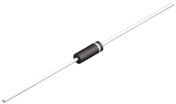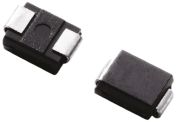SIDACs
A SIDAC – Silicon Diode Alternating Current – is a discrete on/off switch that is used to control the output power of an electrical circuit.
Differences between SIDACs and DIACs
SIDACs are similar to DIACs (three-layer diodes that conduct electrical current) because their operation is nearly identical. However, a SIDAC is a five-layer device. In general, it has a higher break-over voltage and greater current handling capacities. SIDACs can be used directly for switching and not simply for triggering another switching device. They're commonly used in:
- High voltage lamps
- High voltage power supplies
- Pulse generators
- Fluorescent lighting
How do SIDACs work?
SIDACs are widely used with TRIACs to improve the operation of your power switching system.
They remain in a non-conducting state until the voltage across your device rises to a level above the break-over voltage. At this point the device starts to conduct.
The device will continue to conduct until the voltage falls below its holding current, at which point the device will return to its non-conducting state. It will then conduct again once the break-over voltage is exceeded.

